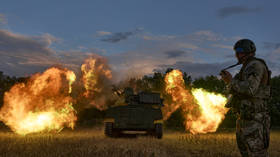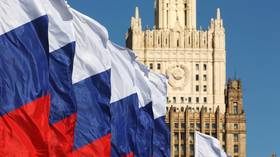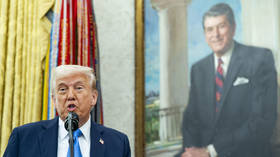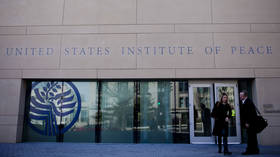Marking 25 years after ‘perestroika’ sparked the end of the USSR
April 23 marks 25 years since former Soviet leader Mikhail Gorbachev first announced the series of political and economic reforms that profoundly changed the USSR – and the entire world.
Perestroika, or Restructuring, brought democracy to the Cold War's Eastern bloc, which is often seen as one of the main reasons for the collapse of communism in the region.
It all started with Gorby’s “Are you in favour of perestroika or would you rather let things slide?”
This is the question that changed Soviet history.
In 1985, Mikhail Gorbachev announced to his people that it's time to change.
Many then believed, and still do today, that Gorbachev took a loose thread and pulled on it, unraveling the Soviet Union into oblivion. But was that really the case?
“You know, the Soviet Union was such a big body built on the skeleton which was from fear,” insisted Vitaly Korotich, former Editor-in-Chief of the popular Soviet Ogonek magazine. “When this fear came out, it went down and it stopped to exist simply because nobody was full of fear towards this government, its powers, its secret police. People started to look around.”
The beginning, as all beginnings, was full of promise. Political dissidents were released from prisons, religious beliefs were no longer forbidden, and the concept of ‘glasnost’, or freedom of speech, was introduced.
Korotich said “It was a very interesting period because people were not ready for openness, people were not ready for glasnost really, and when it started we had so many protests, we had so many attempts to stop us…”
“But anyway, it started and then we understood that it's not enough to say truth, it was necessary to do something,” remembers Ogonyok’s chief editor.
But the road ahead was a rocky one. The Soviet economy was not prepared for the changes taking place and fell apart.
Expert Vyacheslav Nikonov is sure that Mikhail Gorbachev was definitely for a socialist blended economy.
“He was against the market and only few first market reforms were introduced during his Presidency and I think mostly against his will,” Nikonov acknowledged.
“He allowed small co-operatives, he allowed small restaurants, but that was it, there were fixed prices, there was an economy of deficit to which, of course, the whole anti-alcohol campaign added,” recalls the expert.
Back then, even money could not buy most necessities. The reality looked grim. Fights regularly broke out in food stores and the people were getting angry. Especially after seeing, for the first time in decades, what life in the West was like.
25 years later, politicians and analysts still debate the successes and the failures of perestroika and collapse of the Soviet Union as a consequence.
“A democracy without a market economy – that did not work for one simple reason: when people were allowed to ask questions, the first question they asked in an economy of deficits was: ‘Where is the food? Where are the commodities?’” Vyacheslav Nikonov points out.
“When they were allowed to watch television, including Western television, they saw the Western stores and they compared them to stores in the Soviet Union, and their question was absolutely evident: ‘So where is all this?’”
The romanticism of perestroika died in the 1990's when people realized the freedoms they were promised didn't provide them with the basics to keep them alive. What followed was a younger, more pragmatic generation of politicians.
But despite all its failed hopes and promises, the changes that began 25 years ago paved the way for the country that exists today.
Today, the country has a long way to go ahead of it, but also has a much more defined and promising path.













